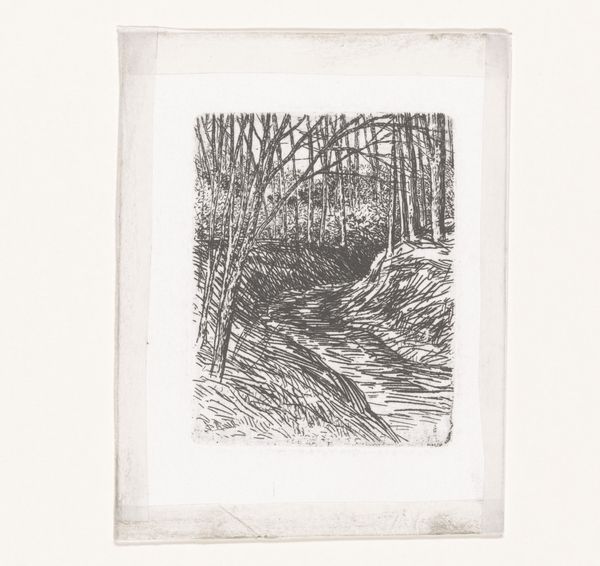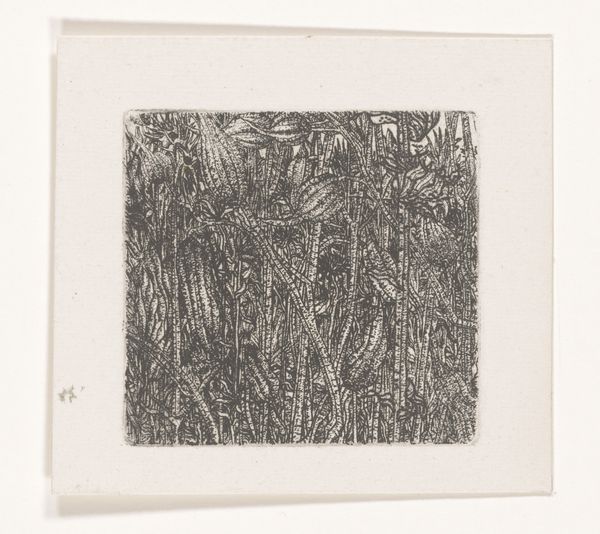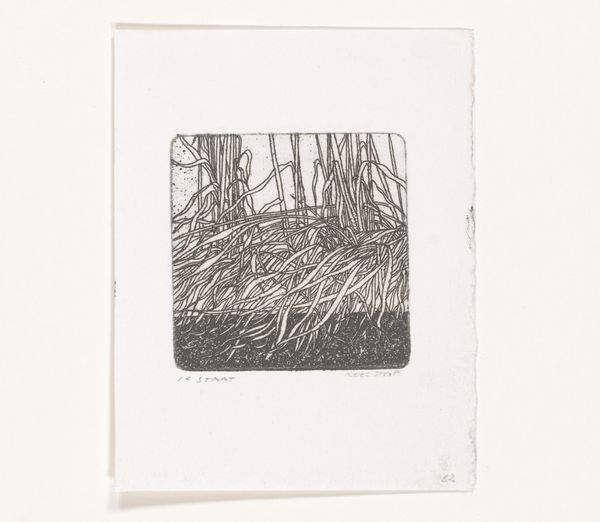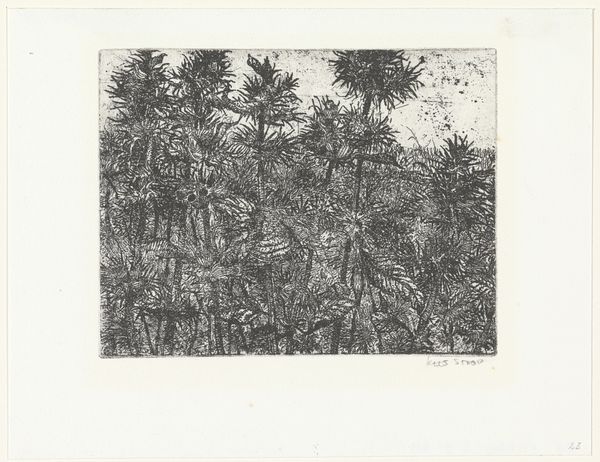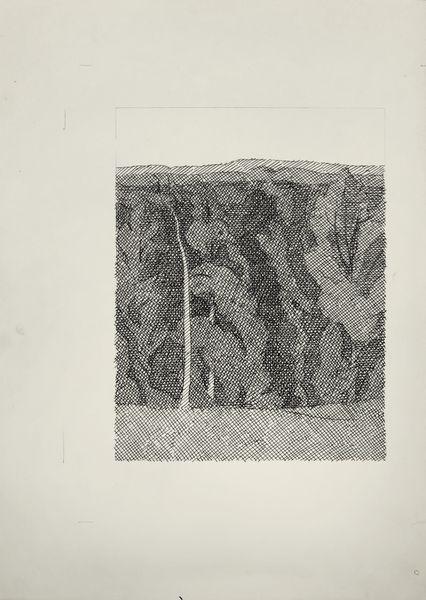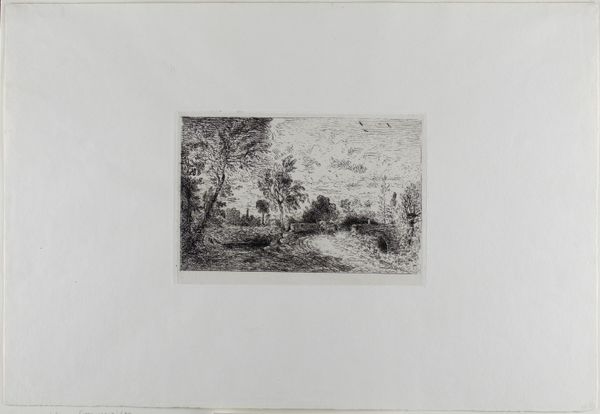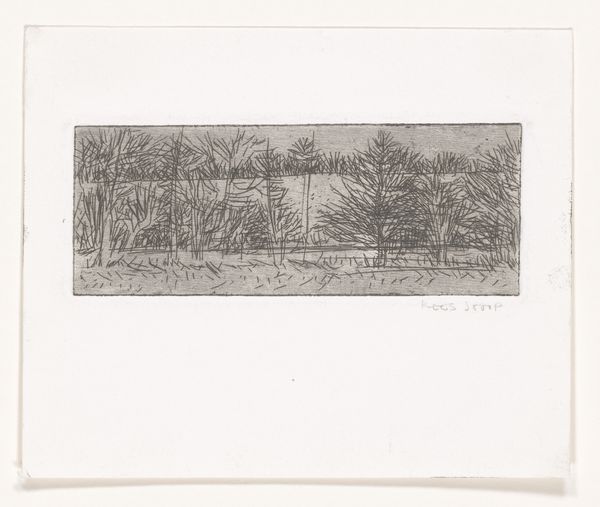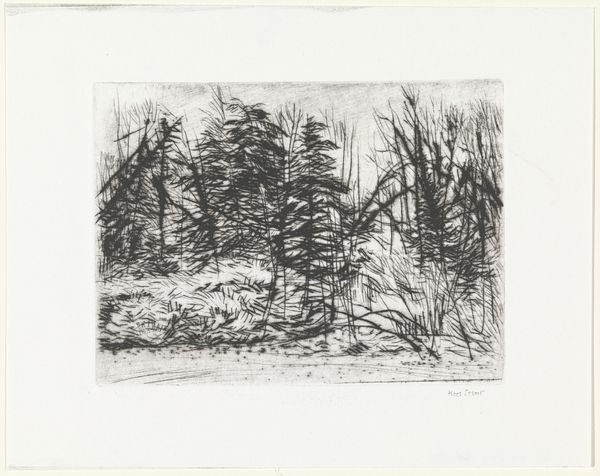
print, etching
#
organic
# print
#
organic shape
#
etching
#
old engraving style
#
landscape
Dimensions: height 104 mm, width 118 mm, height 59 mm, width 83 mm
Copyright: Rijks Museum: Open Domain
Editor: This etching, titled "Schutting" by Kees Stoop, is a detailed landscape scene, rendered in an almost miniature scale. It’s quite intricate; I’m immediately drawn to the textures created by the etching lines. How do you interpret this work? Curator: The first thing that grabs my attention is the clear division between the man-made and the organic: the fence and foliage. What's interesting is thinking about Stoop's choice of etching. This method necessitates a physical process, applying acid to a plate, then printing, that connects the artist to the landscape via labor. Editor: That makes sense. It is a really hands-on process. How does this process impact the consumption or our perception of this artwork? Curator: Well, knowing it's an etching changes the value proposition, doesn't it? It's not just an image but also a trace of physical actions, suggesting that even the simplest landscape requires human intervention and labor to both create and be represented. Are we meant to consider Stoop's labor in observing this seemingly "simple" landscape? Editor: I suppose it does highlight the relationship between the artist, the material, and the depicted scene. I had been only considering the depicted landscape without thinking about Stoop's contribution to it! Curator: Exactly. The piece serves as a powerful reminder that artistic expression is as much about the material process as it is about aesthetic ideals or capturing of scenery. Editor: I learned something new about interpreting art by paying attention to the physical and historical context in the making of this work, which I'll certainly apply in my future work. Thanks! Curator: Absolutely! And that the choice of medium affects the content that is transmitted.
Comments
No comments
Be the first to comment and join the conversation on the ultimate creative platform.
